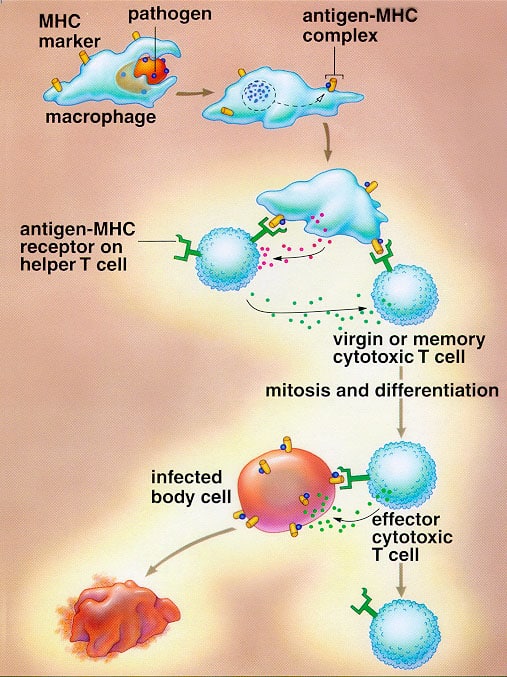Complement Protein: special proteins that expand/puncture the pores in membranes on foreign microbes allowing extracellular fluid to rush in and lyse the cells, thus killing them.
Lymphocytes: specialized white blood cells
T-cells: produced in the bone marrow and stored in the thymus. Act in a seek and destroy fashion by recognizing the antigen markers on a foreign protein. Send messages to B-cells
Helper T-cells: have receptors that bind antigens and send message to B-cells via lymphokine giving them the antigen “blueprint” so that they can make antibodies.
Killer T-cells: puncture cell membrane of infected cells killing both cells and invader
Suppressor T-cell: once attack is over, it turns the immune response off. Phagocytes will engulf damaged cells and debris after the attack and tissues begin their repair cycle.
B-cells: produced in the bone marrow and produce antibodies which are complimentary in shape to the antigen.
Once the antibody binds the antigen, a killer T-cell recognizes the entire complex and engulfs the invader by phagocytosis.
Some B-cells can produce up to 2000 antibody molecules per second. Other B-cells become memory cells that are stored in your bone marrow retaining the specific information of the antigen. Upon future infection, they quickly are released and can launch an immediate antibody-mediated attack on the invading antigen.
An adequate number of antibodies must remain in the blood in order for immunity to exist. If the antibody level drops, you may succumb to the invader upon subsequent infection. This is why your DPT booster shot needs to be administered every 10 years.
